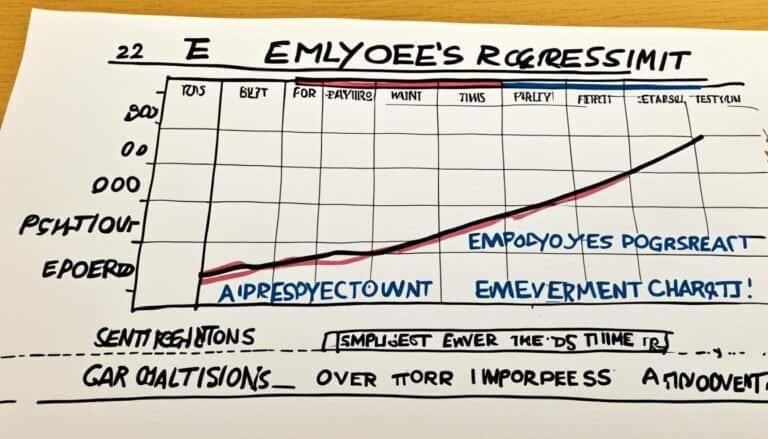What Is People Management?
In the domain of organizational dynamics, people management plays a pivotal role in fostering a harmonious and productive work environment. Understanding the intricacies of human interaction and motivation is essential for effective leadership.
But have you ever wondered what truly defines the essence of managing people beyond just delegating tasks and overseeing operations? The complexities of managing a diverse workforce go beyond surface-level interactions; it explores into the core of human behavior and organizational dynamics.
Key Takeaways
- People management involves promoting employee engagement and nurturing workplace culture.
- Effective communication, trust building, and motivation are crucial in team dynamics.
- Different leadership styles should be implemented to adapt to diverse team dynamics.
- Performance evaluation, feedback, and personalized development paths enhance productivity and employee growth.
Definition of People Management
To effectively lead and inspire your team, understanding the fundamental definition of People Management is essential. People Management encompasses a variety of elements important for organizational success. This includes implementing different leadership styles to suit diverse team dynamics and goals. By recognizing the importance of adapting your leadership approach to the specific needs of your team members, you can enhance team motivation and foster a positive work environment.
Additionally, People Management involves promoting employee engagement and nurturing a strong workplace culture. Employee engagement is significant as it directly impacts productivity, retention rates, and overall job satisfaction. Through effective People Management, you can create an environment where employees feel valued, motivated, and committed to achieving common goals.
Additionally, fostering a positive workplace culture characterized by open communication, respect, and collaboration is key to maintaining high levels of employee morale and performance.
Importance in Organizations
Emphasizing the significance of People Management within organizations lies in its pivotal role in shaping team dynamics, enhancing productivity, and fostering a cohesive work culture. Effective management of people leads to increased employee engagement and higher retention rates. Additionally, it plays a critical role in leadership development and succession planning, ensuring a continuous pipeline of skilled individuals ready to take on key roles within the organization.
| Importance of People Management | Benefits |
|---|---|
| Employee Engagement | Increased motivation and commitment |
| Retention | Lower turnover rates, higher loyalty |
| Leadership Development | Ensuring future organizational success |
| Succession Planning | Smooth handover of roles, reduced disruption |
Key Responsibilities of Managers
One critical aspect of effective people management is the clear delineation of key responsibilities for managers within an organization. Managers play a pivotal role in team motivation through the effective application of various leadership styles. By understanding the different leadership approaches such as transformational, democratic, or servant leadership, managers can tailor their style to inspire and guide their teams towards success.
Employee engagement is another essential responsibility for managers. Engaged employees are more productive, innovative, and committed to the organization. Managers must create a work environment that fosters engagement through open communication, recognition of achievements, and providing opportunities for growth and development.
Moreover, talent retention is a key responsibility for managers to guarantee the organization maintains a skilled and experienced workforce. Managers need to identify high-potential employees, provide them with opportunities to grow, and create a work culture that values and appreciates talent, reducing turnover rates and retaining valuable employees for the long term.
Building Strong Teams
To build strong teams, focus on understanding team dynamics, implementing effective communication strategies, and mastering conflict resolution techniques.
By recognizing the importance of team dynamics, you can leverage individual strengths to achieve collective goals.
Utilizing clear communication and conflict resolution skills will foster a cohesive and productive team environment.
Team Dynamics Importance
Building strong teams relies on effective communication and collaboration among team members. Team collaboration and problem-solving skills are essential for fostering a cohesive and productive team dynamic.
Trust building and motivation techniques play a pivotal role in creating a positive work environment where team members feel valued and supported. Encouraging open communication channels, promoting a culture of transparency, and recognizing individual strengths contribute to a successful team dynamic.
Communication Strategies Within Teams
Implementing effective communication strategies within teams is crucial for fostering strong team dynamics and achieving collective success. To enhance communication within your team, consider the following strategies:
- Team Bonding and Trust Building: Organize team-building activities and encourage open discussions to create a sense of unity and trust among team members.
- Effective Feedback Mechanisms: Implement regular feedback sessions to provide constructive criticism and praise, promoting continuous improvement and motivation within the team.
- Motivation Techniques: Recognize and reward team members for their contributions, fostering a positive and motivating work environment.
- Clear Communication Channels: Establish clear channels for communication to make sure that information flows smoothly and everyone is on the same page.
Conflict Resolution Techniques
In order to strengthen team dynamics and promote cohesion, mastering conflict resolution techniques is essential. Conflict resolution strategies play a vital role in fostering team collaboration and maintaining a positive work environment.
By employing effective mediation techniques, individuals can address conflicts constructively, leading to improved interpersonal relationships within the team. Encouraging open communication channels and active listening are key components in resolving conflicts promptly.
It's important to address issues as they arise to prevent escalation and maintain productivity. Training team members in conflict resolution strategies can equip them with the skills needed to navigate disagreements and reach amicable solutions.
Ultimately, by proactively managing conflicts, teams can enhance their overall performance and cultivate a culture of respect and understanding.
Effective Communication Strategies
To enhance organizational effectiveness, mastering effective communication strategies is essential for fostering collaboration and productivity among team members. When it comes to effective communication, consider the following strategies:
- Active Listening: Engage in active listening by giving your full attention to the speaker, showing genuine interest, and providing feedback to guarantee understanding.
- Body Language: Pay attention to nonverbal cues such as facial expressions, gestures, and posture, as they can convey emotions and attitudes that words alone may not express.
- Clarity and Conciseness: Clearly convey your message using simple language and avoid unnecessary jargon to make sure that your communication is easily understood by all team members.
- Feedback Mechanisms: Implement feedback mechanisms such as regular check-ins, surveys, or open-door policies to encourage two-way communication and address any issues or concerns promptly.
Conflict Resolution Techniques
When facing conflicts within a team, employing effective conflict resolution techniques is paramount for maintaining a harmonious and productive work environment. Conflict resolution involves addressing disputes or disagreements among team members in a constructive manner to promote team cohesion.
One technique is active listening, where you attentively hear out all parties involved to understand their perspectives fully. By acknowledging each person's viewpoint, you validate their feelings and demonstrate respect, which can help de-escalate tensions.
Another technique is encouraging open communication, creating a safe space for team members to express their concerns and ideas without fear of judgment. Additionally, fostering a problem-solving mindset among the team can shift the focus from blame to finding solutions collaboratively.
Performance Evaluation and Feedback
When evaluating performance, consider the various methods used, such as peer reviews or self-assessments.
Guarantee expectations are clearly defined to minimize misunderstandings and boost productivity.
Utilize constructive criticism techniques to provide feedback that encourages growth and development.
Evaluation Methods Used
Effective evaluation methods play a pivotal role in gauging performance and providing valuable feedback to employees. Utilizing various performance appraisal techniques and feedback methods can enhance employee motivation and contribute to the success of recognition programs.
Here are some key evaluation methods used in people management:
- 360-Degree Feedback: Involves collecting feedback from peers, supervisors, subordinates, and clients to provide a thorough view of an employee's performance.
- Management by Objectives (MBO): Setting specific objectives with employees and evaluating their performance based on the achievement of these objectives.
- Behaviorally Anchored Rating Scales (BARS): A method that combines elements of narrative and quantified ratings to assess performance based on specific behavioral examples.
- Critical Incident Technique: Focuses on identifying critical behaviors that lead to positive or negative performance outcomes for employees.
Setting Clear Expectations
Setting clear expectations is essential for effective performance evaluation and feedback in people management. Expectation management plays a critical role in fostering employee engagement and aligning individual goals with organizational objectives.
Clear communication of expectations guarantees that employees understand what's required of them, leading to improved performance and overall team morale. By setting specific, measurable, achievable, relevant, and time-bound (SMART) goals, managers provide a roadmap for success and create a foundation for constructive feedback.
When expectations are transparent and well-defined, employees feel empowered to meet or exceed them, contributing to a positive work environment and increased productivity. Consistent reinforcement of these expectations through open dialogue further strengthens the manager-employee relationship and enhances performance evaluation processes.
Constructive Criticism Techniques
To enhance performance evaluation and feedback in people management, mastering constructive criticism techniques is essential. Constructive criticism not only helps employees understand areas for improvement but also fosters a culture of continuous growth and development. Here are four key techniques to deliver constructive criticism effectively:
- Be Specific: Provide concrete examples to illustrate your feedback clearly.
- Focus on Behavior: Address actions or behaviors rather than personal traits.
- Offer Solutions: Suggest practical solutions or improvements to support employee growth.
- Maintain a Positive Tone: Deliver feedback in a supportive manner to boost team morale and enhance leadership skills.
Employee Development and Training
When considering employee development and training, it's essential to align the learning objectives with the organization's strategic goals and individual performance targets. Leadership development plays an important role in nurturing future leaders within the company. By providing leadership training programs, employees can enhance their decision-making skills, communication abilities, and strategic thinking, ultimately contributing to the organization's long-term success.
Skill enhancement is another important aspect of employee development. Offering opportunities for employees to upskill or reskill guarantees they remain competitive in a rapidly evolving business landscape. Training programs focusing on technical skills, soft skills, and industry-specific knowledge can boost employee confidence and performance.
To maximize the impact of employee development and training initiatives, it's important to create personalized learning paths tailored to individuals' needs. Conducting regular performance evaluations can help identify areas for improvement and guide the development process effectively. By investing in employee development, organizations not only foster a culture of continuous learning but also increase employee engagement and retention.
Creating a Positive Work Culture
How can a positive work culture influence employee productivity and organizational success?
A positive work culture is vital for fostering a productive and thriving workplace environment. Here are four key ways in which a positive work culture can impact your organization:
- Employee Engagement: When employees feel valued, supported, and connected to the organization, they're more likely to be engaged in their work. This leads to increased productivity and higher levels of job satisfaction.
- Team Building: A positive work culture promotes teamwork, collaboration, and communication among employees. This not only enhances the overall morale within the workplace but also improves the efficiency and effectiveness of teams.
- Workplace Morale: Positive work culture boosts employee morale, creating a more positive and enjoyable work environment. This, in turn, reduces turnover rates and increases employee retention.
- Leadership Styles: Effective leadership that promotes positivity, transparency, and open communication contributes greatly to creating a positive work culture. Strong leadership sets the tone for the organization and influences employee behavior and attitudes.
Conclusion
To summarize, people management is essential for organizational success. A staggering 85% of employees are dissatisfied with their workplace due to poor management practices.
By focusing on building strong teams, effective communication, conflict resolution, performance evaluation, employee development, and creating a positive work culture, managers can improve employee satisfaction and overall productivity. Implementing these strategies is important for fostering a successful and harmonious work environment.







